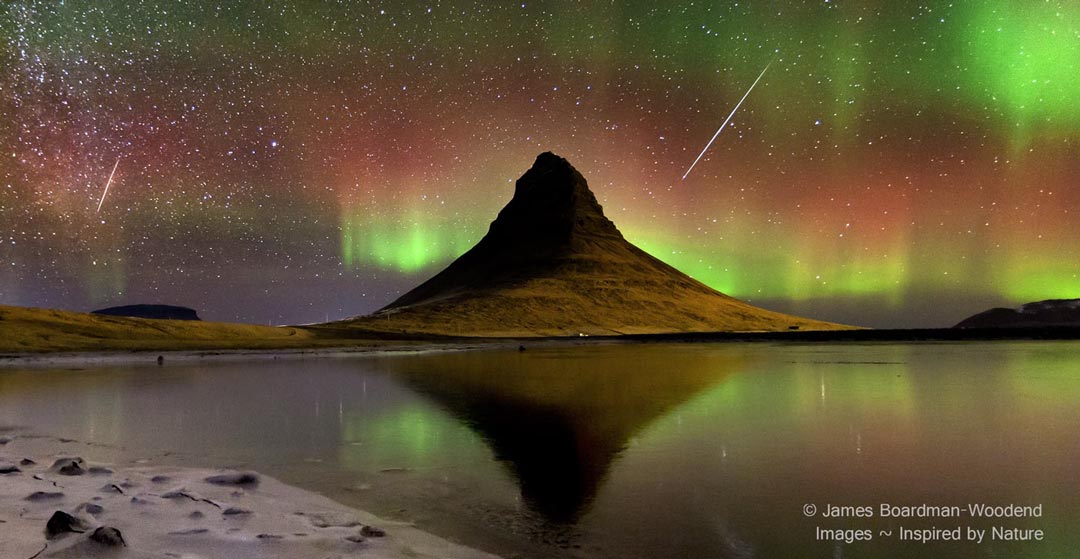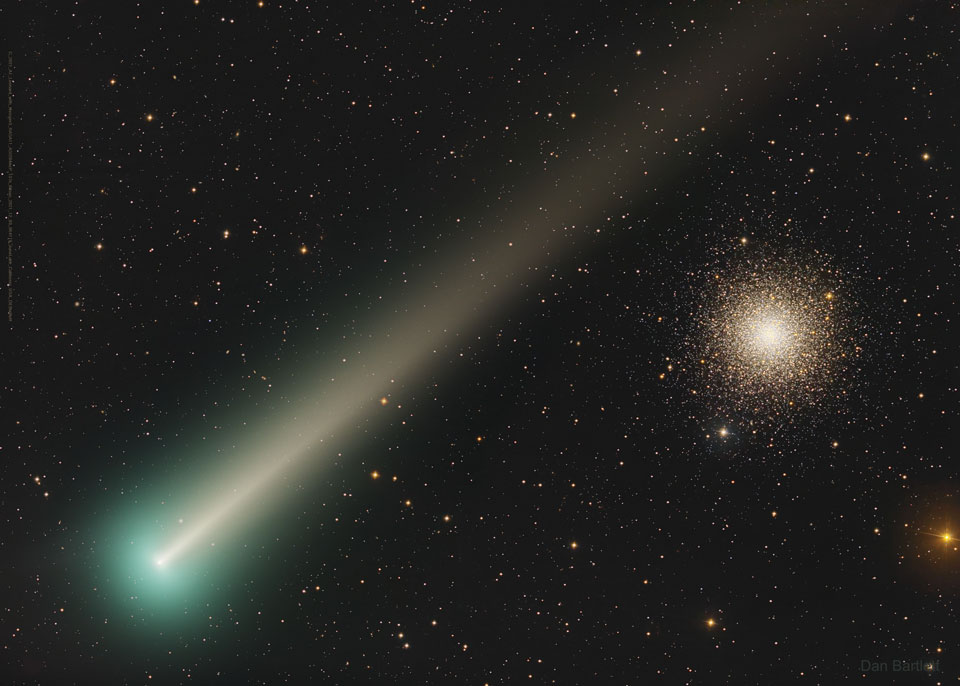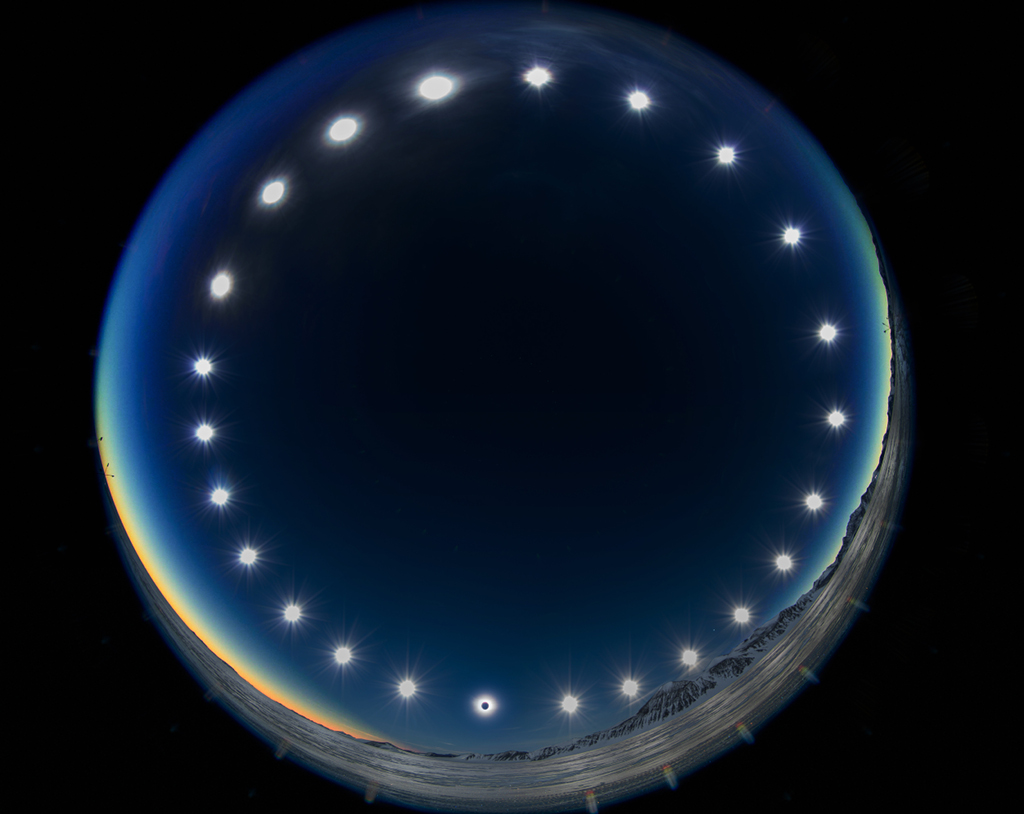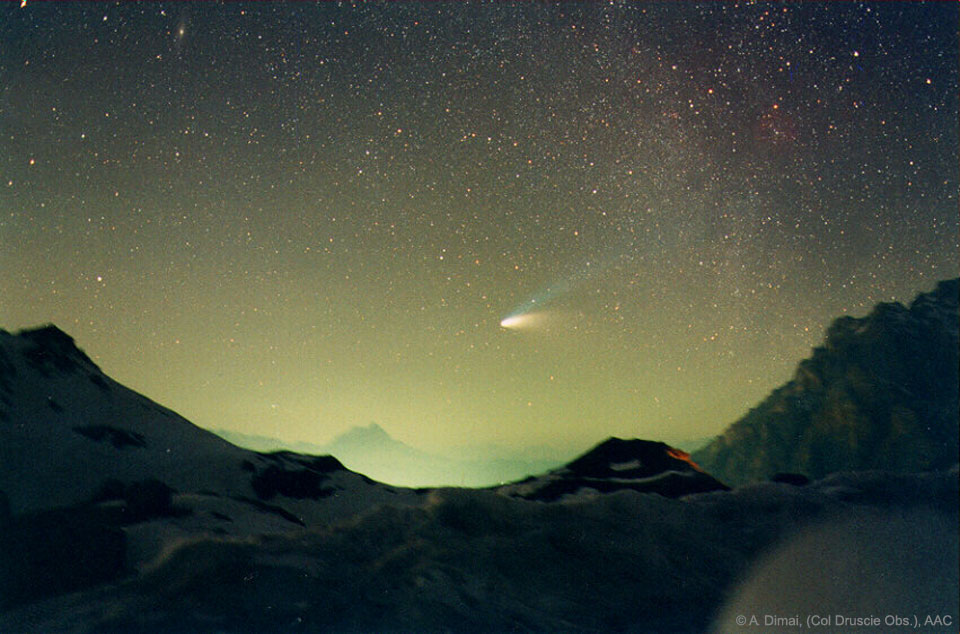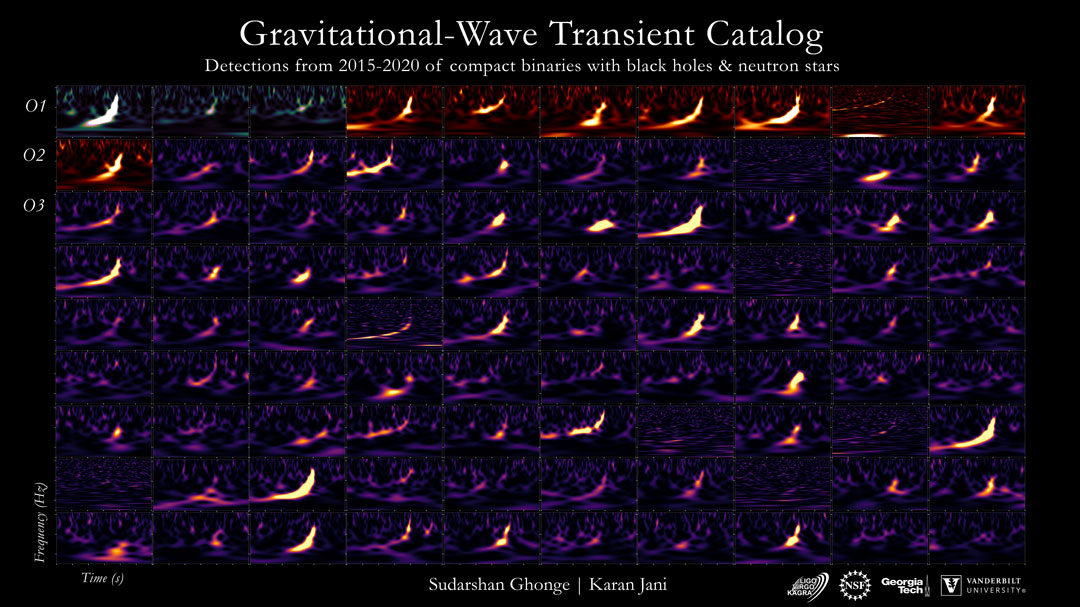Nombre total de pages vues
14/12/2021
AERONAUTIQUE - Avions de légende - Le Messerschmitt Bf 109
13/12/2021
ASTRONOMIE - Cette nuit, une pluie d'étoiles
Bien qu'il fasse froid, les longues nuits de décembre sont resplendissantes (surtout cette année avec des planètes alignées et une comète) et réservent de beaux spectacles célestes. Parmi eux figurent les Géminides. Une pluie d'étoiles filantes qui s'étend du 19 novembre jusqu'à la veillée de Noël, et est unanimement considérée comme l'une des plus belles, si ce n'est LA plus belle de l'année ! Lors de son pic d'activité, attendu vers le 13-14 décembre, le nombre de météores plongeant dans l'atmosphère peut dépasser les 60 en une heure !
ASTRONOMY - Meteors and Auroras over Iceland
2021 December 13
Image Credit & Copyright: James Boardman-Woodend; Annotation: Judy Schmidt
Explanation: What's going on behind that mountain? Quite a bit. First of all, the mountain itself, named Kirkjufell, is quite old and located in western Iceland near the town of Grundarfjörður. In front of the steeply-sloped structure lies a fjord that had just begun to freeze when the above image was taken -- in mid-December of 2012. Although quite faint to the unaided eye, the beautiful colors of background aurorae became quite apparent on the 25-second exposure. What makes this image of particular note, though, is that it also captures streaks from the Geminids meteor shower -- meteors that might not have been evident were the aurora much brighter. Far in the distance, on the left, is the band of our Milky Way Galaxy, while stars from our local part of the Milky Way appear spread across the background. Tonight the Geminids meteor shower peaks again and may well provide sky enthusiasts with their own memorable visual experiences.
12/12/2021
AERONAUTIQUE - Avions de légende - Le Spitfire
ASTRONOMY - Comet Leonard Before Star Cluster M3
2021 December 12
Image Credit & Copyright: Dan Bartlett
Explanation: Comet Leonard is now visible to the unaided eye -- but just barely. Passing nearest to the Earth today, the comet is best seen this week soon after sunset, toward the west, low on the horizon. Currently best visible in the north, by late December the comet will best be seen from south of Earth's equator. The featured image of Comet C/2021 A1 (Leonard) was taken a week ago from California, USA. The deep exposure shows in great detail the comet's green gas coma and developing dust tail. The comet -- across our inner Solar System and only light-minutes away -- was captured passing nearly in front of globular star cluster M3. In contrast, M3 is about 35,000 light-years away. In a week, Comet Leonard will pass unusually close to Venus, but will continue on and be at its closest to the Sun in early January.
10/12/2021
ASTRONOMY - Eclipse on a Polar Day
Image Credit & Copyright: Stephanie Ziyi Ye
Explanation: During polar day, in Arctic and Antarctic summer, the Sun stays above the horizon for periods of 24 hours or more. Recorded on December 4, this fisheye timelapse image tracks the Sun in multiple frames as it completes a circle in the summer sky above Union Glacier, Antarctica. Of course on that date, Union Glacier's sky did grow dark even though the Sun was above the horizon. Captured during the brief period of totality, an eclipsed Sun is at bottom center of the composite view. Near the edge of the total eclipse path across planet Earth, the Moon's shadow darkens the sky above.
09/12/2021
ASTRONOMY - A Total Eclipse of the Sun
2021 December 9
Image Credit & Copyright: Theo Boris, Christian A. Lockwood, David Zimmerman (JM Pasachoff Antarctic Expedition)
Compositing: Zev Hoover and Ronald Dantowitz (MARS Scientific)
Explanation: Few were able to stand in the Moon's shadow and watch the December 4 total eclipse of the Sun. Determined by celestial mechanics and not geographical boundaries, the narrow path of totality tracked across planet Earth's relatively inaccessible southernmost continent. Still, some enthusiastic and well-insulated eclipse chasers were rewarded with the dazzling spectacle in Antarctica's cold but clear skies. Taken just before the brief totality began, this image from a ground-based telescope inside the edge of the shadow path at Union Glacier catches a glimmer of sunlight near the top of the silhouetted lunar disk. Look closely for the pinkish solar prominences arcing above the Sun's limb. During totality, the magnificent solar corona, the Sun's outer atmosphere, made its much anticipated appearance, seen in the composite view streaming far from the Sun's edge.
AERONAUTIQUE - Avions de légende - Messerschmitt Me 262
08/12/2021
ASTRONOMY - Comet Hale-Bopp Over Val Parola Pass
Image Credit & Copyright: A. Dimai, (Col Druscie Obs.), AAC
Explanation: Comet Hale-Bopp, the Great Comet of 1997, became much brighter than any surrounding stars. It was seen even over bright city lights. Away from city lights, however, it put on quite a spectacular show. Here Comet Hale-Bopp was photographed above Val Parola Pass in the Dolomite mountains surrounding Cortina d'Ampezzo, Italy. Comet Hale-Bopp's blue ion tail, consisting of ions from the comet's nucleus, is pushed out by the solar wind. The white dust tail is composed of larger particles of dust from the nucleus driven by the pressure of sunlight, that orbit behind the comet. Comet Hale-Bopp (C/1995 O1) remained visible to the unaided eye for 18 months -- longer than any other comet in recorded history. The large comet is next expected to return around the year 4385. This month, Comet Leonard is brightening and may soon become visible to the unaided eye.
07/12/2021
ASTRONOMY - Ninety Gravitational Wave Spectrograms and Counting
Image Credit: NSF, LIGO, VIRGO, KAGRA, Georgia Tech, Vanderbilt U.; Graphic : Sudarshan Ghonge & Karan Jani
Explanation: Every time two massive black holes collide, a loud chirping sound is broadcast out into the universe in gravitational waves. Humanity has only had the technology to hear these unusual chirps for the past seven years, but since then we have heard about 90 -- during the first three observing runs. Featured above are the spectrograms -- plots of gravitational-wave frequency versus time -- of these 90 as detected by the giant detectors of LIGO (in the USA), VIRGO (in Europe), and KAGRA (in Japan). The more energy received on Earth from a collision, the brighter it appears on the graphic. Among many science firsts, these gravitational-radiation chirps are giving humanity an unprecedented inventory of black holes and neutron stars, and a new way to measure the expansion rate of our universe. A fourth gravitational wave observing run with increased sensitivity is currently planned to begin in 2022 December.
SANTé/MEDECINE - CANCER - 12 AVANCEES REVOLUTIONNAIRES - 7. Des biopsies liquides et synthétiques moins invasives et plus rapides
Les biopsies classiques nécessitent le prélèvement de tissu, souvent par chirurgie. Aujourd’hui, la biopsie liquide offre une alternative pl...

-
2022 September 26 All the Water on Planet Earth Illustration Credit: Jack Cook, Adam Nieman, Woods Hole Oceanographic Institution ; Data ...
-
2025 May 11 The Surface of Venus from Venera 14 Image Credit: Soviet Planetary Exploration Program , Venera 14 ; Processing & Copyri...


